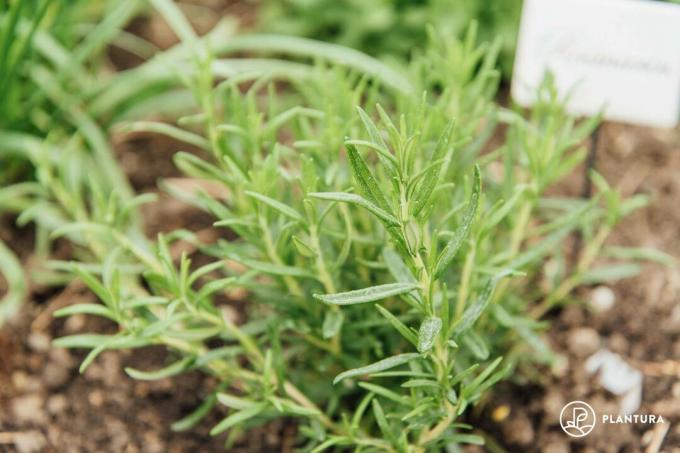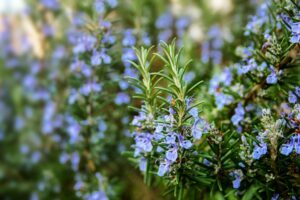Thanks to its aromatic flavor, rosemary is an all-rounder in Mediterranean cuisine. We will show you the differences between the different varieties.

rosemary (Rosmarinus officinalis) belongs exactly like lavender (Lavandula angustifolia) and sage (Salvia officinalis) to the mint family (Lamiaceae) and thus joins a group of popular Mediterranean herbs. Various rosemary varieties with their own growth forms and aromatic properties enrich the variety on the market. We introduce you to the most important and most interesting representatives of the spicy subshrub.
- arp: wide-growing and relatively hardy variety; stands out due to its rather greyish needles and its light blue blossom; Thanks to its better frost tolerance, it is well suited for colder regions.
- Blue Tuscan: Extremely upright and strong-growing variety with strikingly large needles.
- bluelip: thanks to its squat growth it is well suited for pot cultivation.
- boules: ground-creeping variety; comparatively hardy; in addition to an extremely good taste with striking light blue ornamental flowers.
- French rosemary: fast-growing traditional French variety; light blue flower and good aroma; strong and robust.
- Gorizia: brilliant blue-purple flowers adorn this tall-growing strain; Winter protection required.
- Hill Hardy: Texas selection with an excellent hardiness; good flavor.
- Majorca Pink: pink flowers adorn the Spanish variety; also in winter likes warmth and needs protection from frost; compact growth with extremely short needles.
- Rex: lush, light-flowering variety; also grows well on poor soil and is extremely robust.
- salem: optically very beautiful, deep blue flower; extremely susceptible to frost damage and therefore only to be grown in milder areas.
- Santa Barbara: creeping variety of rosemary; well suited for climates that are warm in summer and cold in winter; blooms in large numbers in radiant deep blue.
- Veitshochheim: selected in the Bavarian horticultural laboratory in Veitshöchheim for the harsh local climate; particularly hardy, robust and fast-growing.
While reading you will have noticed that there are also differences between the varieties of rosemary. The most important thing is to check the suitability of each strain for the specific climate of the site. This is the only way to enjoy the distinctive aroma of the fragrant subshrub in your own garden for a long time.
If you have now decided to plant the Mediterranean herb in the garden yourself, you will find our best ones here Tips for fresh rosemary from your own bed.

I studied horticulture and am a real village kid. I grow herbs, sweet fruit and vegetables, using only organic products. In addition to my love of nature, I love to cook - preferably with fresh vegetables from my garden, of course.
Favorite fruit: elder and raspberries
Favorite vegetables: black cabbage, artichokes and asparagus
previous posts

The rosemary is quite frugal and does not need many nutrients. We show how to make your..

Rosemary is one of the most popular Mediterranean kitchen herbs. But there are some care measures for the successful cultivation..

Rosemary is one of the most popular kitchen herbs. We'll show you how to plant the spicy subshrub whole..
